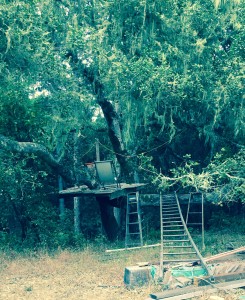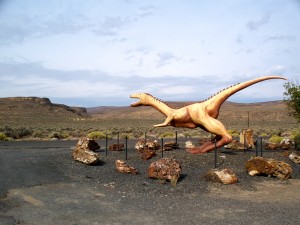
 I’m finishing up converting the workshop I did at Surrey International Writers Conference a month or so ago, Dunking Your Readers in the Details, as an on-demand class. That class was in turn based on an hourlong online writing class I did for Greg Wilson’s Twitch channel a few months ago.
I’m finishing up converting the workshop I did at Surrey International Writers Conference a month or so ago, Dunking Your Readers in the Details, as an on-demand class. That class was in turn based on an hourlong online writing class I did for Greg Wilson’s Twitch channel a few months ago.
The class has been fun to put together. Over the course of being taught multiple times, it’s evolved to a point where it presents a dozen tools for writing more immersive worlds, and includes several exercises to allow you to test out the different techniques and see what works for you.
Curious about it? Here’s the section on prioritizing the senses.
A common tool of “Golden Age science fiction” “” the late 1930s through the 50s, when science fiction was first coming into its own as a genre “” was to invoke all five senses within the first page of a story.
It turns out there’s some science behind that method, in that writing that uses the senses creates more brain activity, setting off mirror neurons. Mirror neurons are neurons that fire under two circumstances: when you are experiencing an event and secondly when you are watching someone else experience it. Writing that invokes the senses makes mirror neurons fire, which makes your reader feel as though they’re experiencing what you are describing.
But beyond that, three of the five senses are more useful to you and should be focused on. Sight and sound will come naturally, and we’re inured to them from watching television and the movies. What you need to push to invoke are smell, taste, and most importantly: touch.
Why is the last the most important? Because touch is more than a question of smooth or rough, velvet versus pebbled. It includes:
â—¦ Temperature like a chilly breeze, the warmth of a sunbeam
â—¦ Bodily sensations such as pain, nausea, exhaustion, fever, itches
â—¦ Motion moments like falling, flying, and floating
When you use these senses in your writing, you are making the reader feel as though they are in the body of the point of view character and experiencing the story world through them. This is a key technique when writing an immersive world.
Update: the class is now available here!
...

So, what’s the difference between taking one of my live online writing classes and the on-demand versions? Let’s look at the cons first:
Pros, on the other hand?
...

In the course of one workshop the topic of writing about rape came up and Jim C. Hines has provided a timely article about it in the most recent Apex Magazine. In brief, Don’t use rape as 1) easy motivation for a character or 2) shorthand for how bad someone is and do some research about things like the mental aftereffects if you’re going to write about it.
If you want to read a piece that does it well (and harrowingly), I would suggest The Sparrow by Maria Doria Russell. I also mentioned Susan Griffin’s Woman and Nature: The Roaring Inside Her.
Also mentioned last week as a great book for looking at sentence and paragraph level writing:
Style: Ten Lessons in Clarity and Grace
...

In this chapter Lymond and Oonagh are escaping the Turkish camp, and it’s just marvelous.
At the edge of the still, dark pool that was the sea, at the brimming edge of freedom where no boat was to be seen, she spoke the first words of the few they were to exchange. ‘I cannot swim. You know it?”
The sea is the still dark pool, the brimming edge of freedom and we know that it’s still perilous and questionable because they can’t even see the boat. It’s a passage where words are scarce and breath is conserved, and Dunnett deftly raises the stakes here with that six word exchange.
...

Sometimes writers need to stop and look and figure out what makes a scene real, what distinguishes it from one of the many movie backdrops in our heads, so that when we recreate it or take a piece from it or somehow incorporate it into a piece of writing, we can convey that quality. Karen Joy Fowler mentioned that often the most unique detail of a landscape is one of the most transitory: a busker, the shape of a cloud, the noise of the rock concert next door. Right now it’s snow for me. So, I ask you – what’s the most evocative detail of your current landscape?
...
Want access to a lively community of writers and readers, free writing classes, co-working sessions, special speakers, weekly writing games, random pictures and MORE for as little as $2? Check out Cat’s Patreon campaign.

"(On the writing F&SF workshop) Wanted to crow and say thanks: the first story I wrote after taking your class was my very first sale. Coincidence? nah….thanks so much."

(horror, short story) At the end of the song, a ghost is waiting. It ripples in the air. It is a hint of iridescent blue, so subtle it can scarcely be seen. If it makes any noise it’s not audible over the music. He is listening to the first verse, the one he wrote the first day he saw her. He wrote it down on a napkin in ballpoint pen. Then he went and introduced himself, because a woman who could inspire words like that was worth keeping around.


This site is protected by reCAPTCHA and the Google Privacy Policy and Terms of Service apply. This site is a participant in the Amazon Services LLC Associates Program, an affiliate advertising program designed to provide a means for sites to earn advertising fees by advertising and linking to Amazon.com.